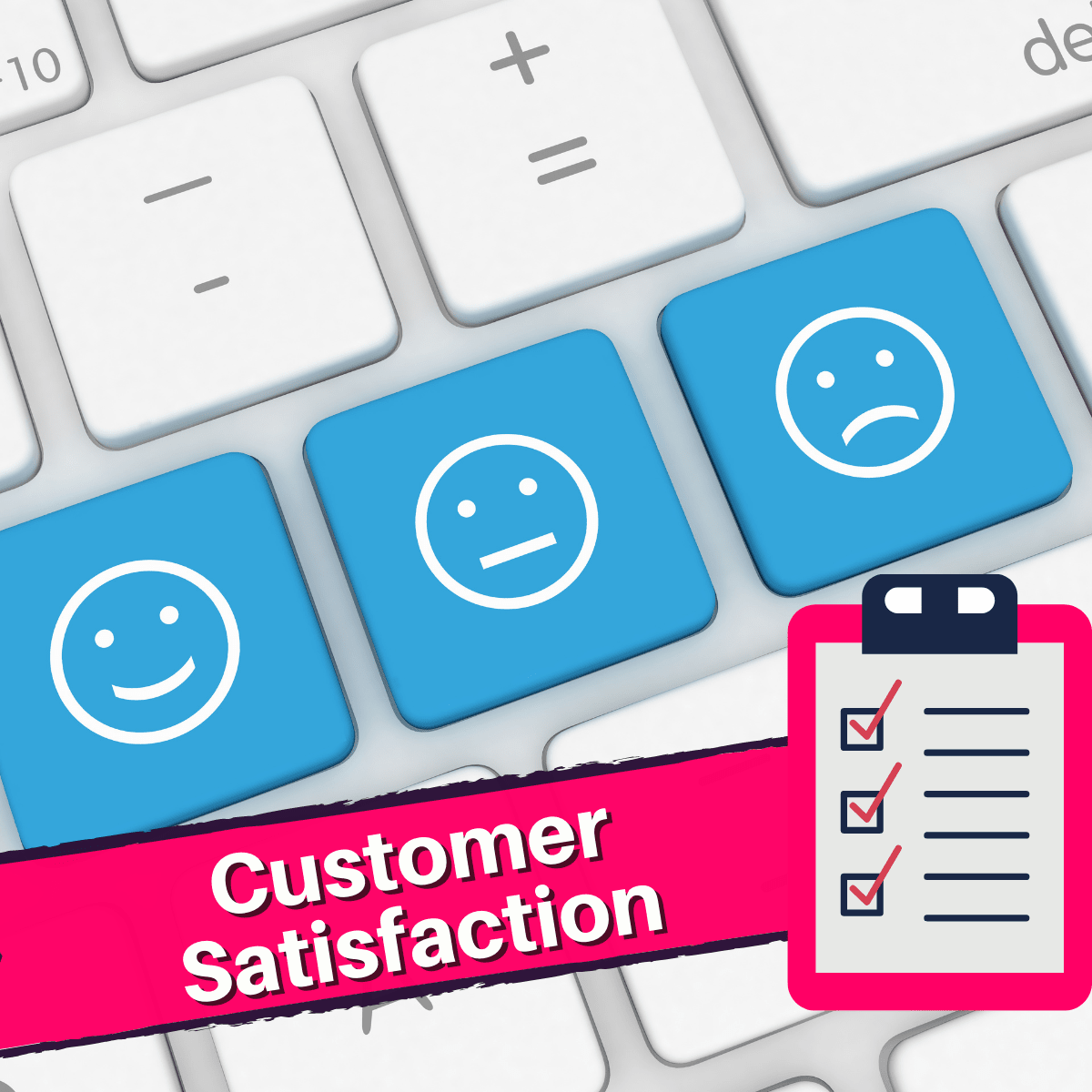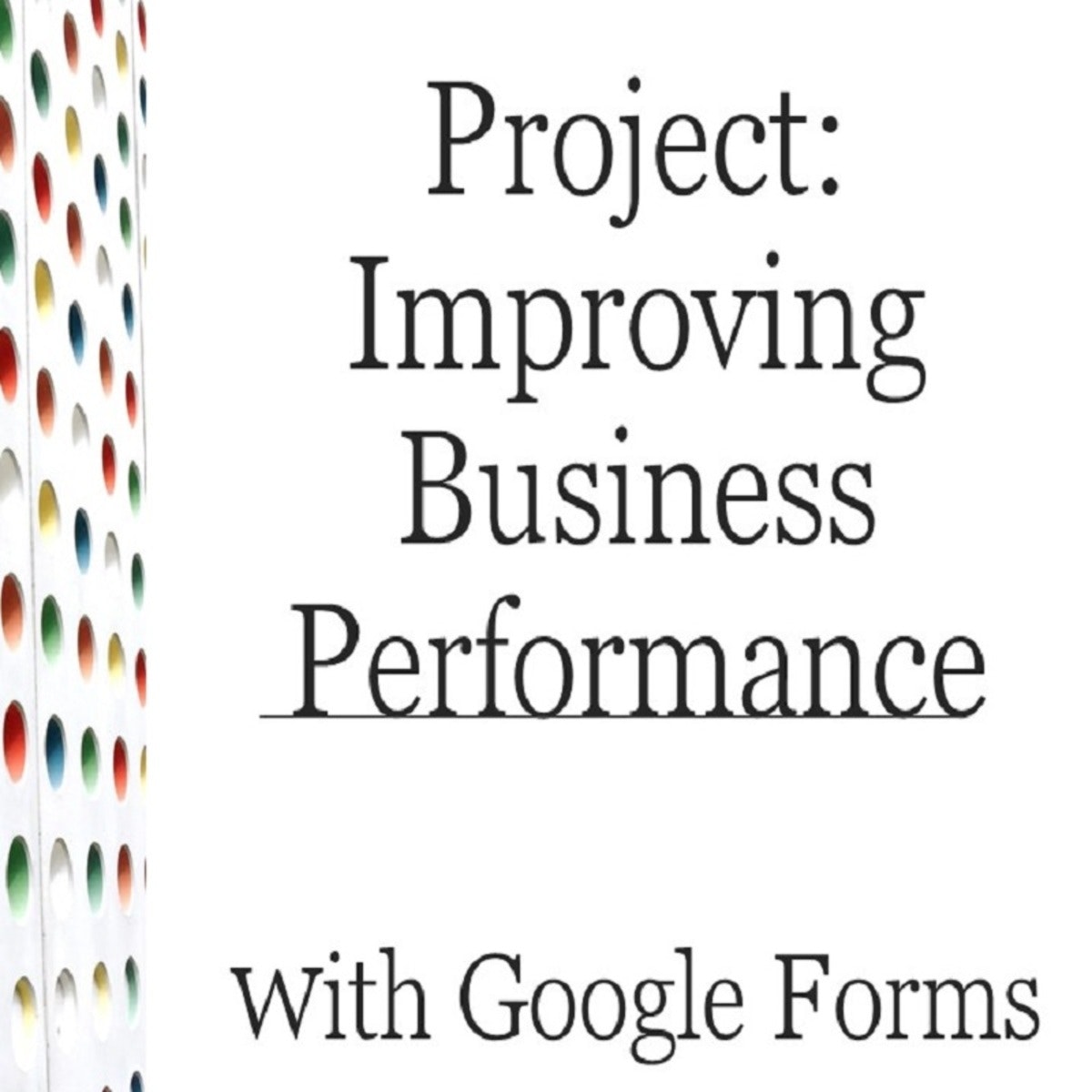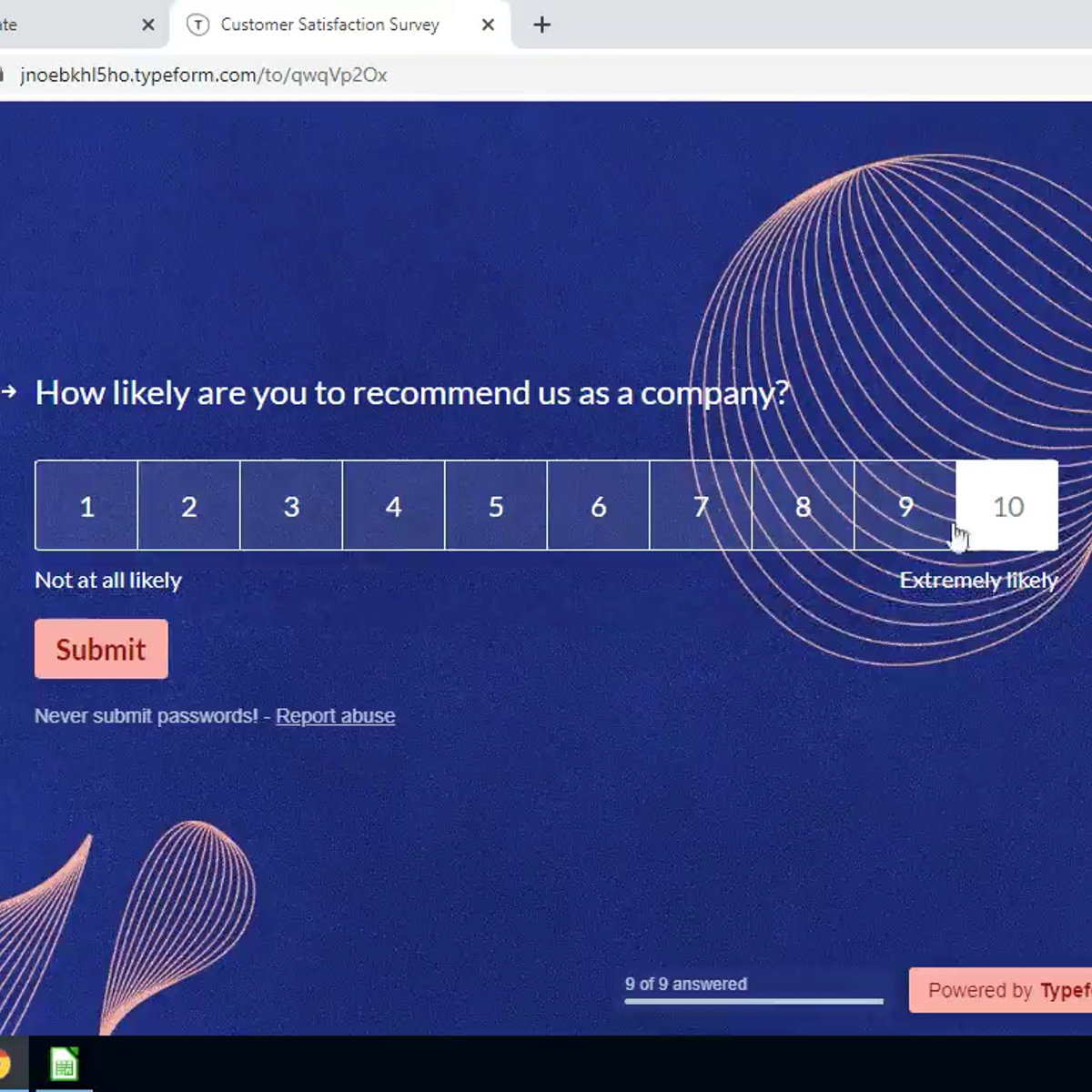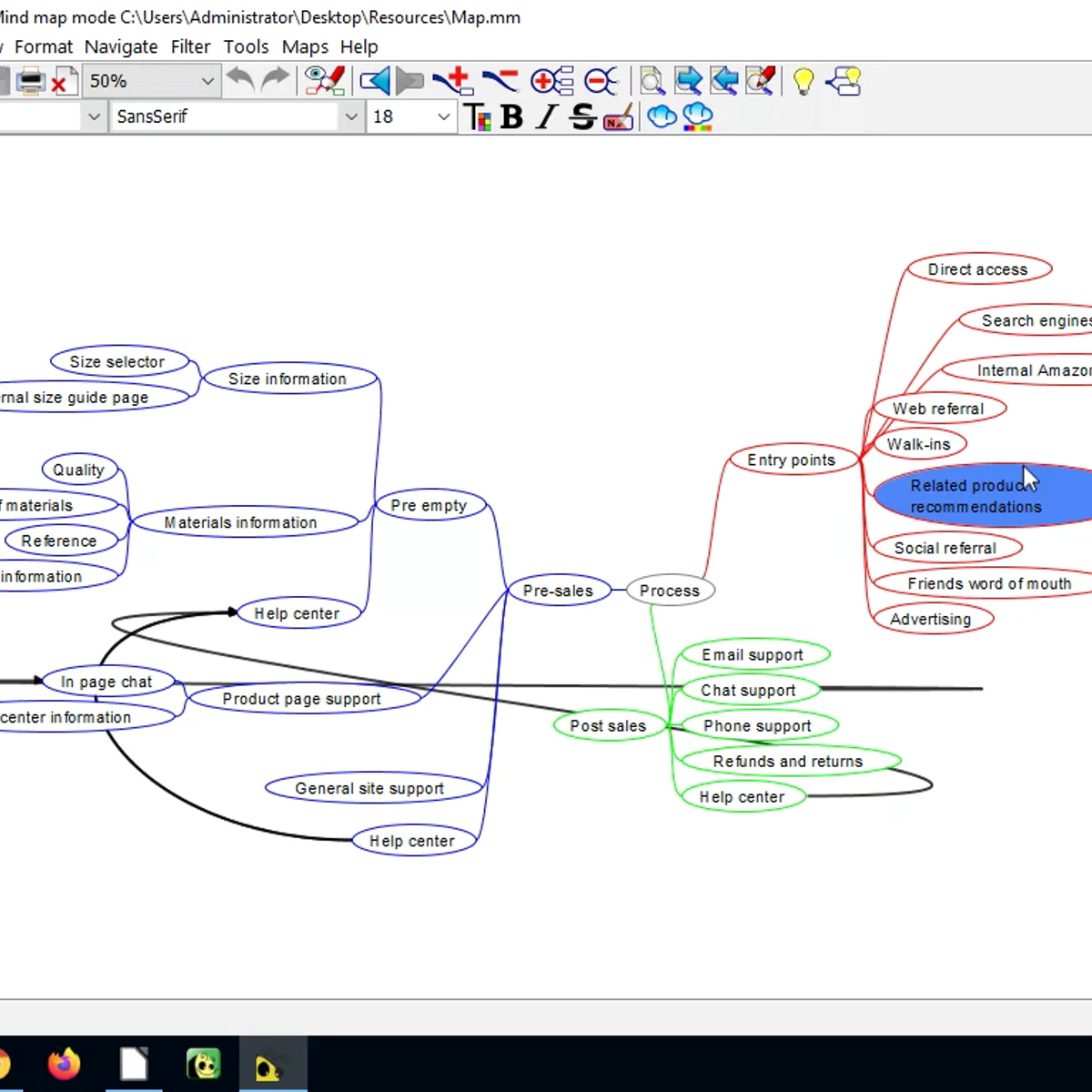Customer Satisfaction
vigating the World of Customer Satisfaction
Customer satisfaction, at its core, is a measure of how products and services supplied by a company meet or surpass customer expectation. It reflects the customer's overall feeling about their experience with a business. Think of it as a report card for how well a company is doing in the eyes of its customers. For anyone new to this concept, imagine you've bought a new phone. If the phone is easy to use, has all the features you wanted, and you had a pleasant experience buying it, you'd likely feel satisfied. Conversely, if the phone is difficult to operate, or the salesperson was unhelpful, your satisfaction would be low.
Working in the field of customer satisfaction can be quite engaging. It often involves understanding human psychology, analyzing data to uncover trends in customer feedback, and developing strategies to improve experiences. Imagine the excitement of identifying a key issue that, once resolved, leads to a significant jump in positive customer reviews and loyalty. Another thrilling aspect is the direct impact one can have on a company's success. Happy customers are more likely to be repeat customers and to recommend the business to others, directly contributing to growth and profitability. This field is dynamic, constantly evolving with new technologies and changing customer expectations, ensuring that the work remains challenging and rewarding.
Historical Context and Evolution of Customer Focus
Understanding the journey of how businesses came to prioritize customer satisfaction provides valuable context. It wasn't always the case that the "customer is king." Examining this evolution helps to appreciate the current emphasis on customer-centric approaches.
From Production-Focused to Customer-Centric
Historically, many businesses operated under a production-centric model. The primary focus was on manufacturing products efficiently and in large quantities. The prevailing assumption was that a good product would essentially sell itself. If you think back to the early days of the automobile industry, for example, the emphasis was on perfecting the assembly line and producing cars. Customer preference, beyond basic functionality, was often a secondary consideration.
Over time, particularly as markets became more competitive and consumers had more choices, a significant shift began. Businesses started to realize that simply producing a product was not enough. They needed to understand what customers wanted, what made them happy, and what would make them choose one brand over another. This marked the beginning of the transition towards a customer-centric model, where the customer's needs and desires became central to business strategy and operations.
This transition wasn't instantaneous but a gradual evolution influenced by various economic and social factors. The rise of consumer rights movements, increasing global competition, and the advent of new technologies that empowered consumers with more information all played a role in accelerating this shift. Companies began to invest in market research, customer service departments, and strategies aimed at building long-term customer relationships rather than just focusing on single transactions.
Key Milestones in Understanding Customer Satisfaction
Several key milestones and influential publications have shaped our modern understanding of customer satisfaction. Early academic research in marketing began to explore concepts like consumer behavior and decision-making processes. Thinkers and writers started to articulate the importance of the customer's perspective in business success.
For instance, the development of formal market research techniques allowed businesses to systematically gather and analyze customer feedback. The publication of seminal books and articles on service quality and customer relationship management further solidified the importance of customer satisfaction as a key business objective. These works often introduced models and frameworks that helped organizations understand the drivers of satisfaction and dissatisfaction.
The advent of the internet and digital technologies marked another significant turning point. Suddenly, customers had a global platform to share their experiences, both good and bad, with a vast audience. This transparency forced companies to become even more attuned to customer sentiment and to respond more quickly to feedback. The rise of social media amplified this effect, making customer voice more powerful than ever before.
Evolution with Technology and Globalization
Technology and globalization have profoundly reshaped the landscape of customer satisfaction. The internet, mobile devices, and social media have created new channels for interaction and new touchpoints in the customer journey. This has led to both opportunities and challenges for businesses.
On one hand, technology allows companies to gather vast amounts of data about customer preferences and behavior, enabling more personalized experiences and targeted marketing. Customer Relationship Management (CRM) systems, for example, help businesses track interactions and manage relationships at scale. Artificial intelligence (AI) and machine learning are increasingly used to analyze feedback, predict customer needs, and even power automated customer service solutions like chatbots.
On the other hand, these same technologies have raised customer expectations. Customers now expect seamless experiences across all channels, instant responses, and a high degree of personalization. Globalization has intensified competition, meaning businesses are not just competing with local players but with companies from all over the world. This makes consistently delivering high levels of customer satisfaction even more critical for survival and growth. The challenge lies in leveraging technology effectively while maintaining a human touch and building genuine relationships.
Core Concepts and Theoretical Frameworks
To truly grasp customer satisfaction, it's helpful to understand some of the foundational theories and concepts that underpin the field. These frameworks provide a structured way to think about how customers form opinions and make decisions, and what ultimately drives their satisfaction.
Expectancy Disconfirmation Theory
One of the most influential theories in customer satisfaction is the Expectancy Disconfirmation Theory. At its heart, this theory suggests that satisfaction is determined by a comparison between a customer's pre-purchase expectations about a product or service and their post-purchase perception of its actual performance.
Imagine you're going to a new restaurant. You might have certain expectations based on reviews you've read, word-of-mouth recommendations, or the restaurant's pricing. If the food, service, and ambiance meet or exceed these expectations (positive disconfirmation), you'll likely feel satisfied. If the experience falls short of your expectations (negative disconfirmation), you'll probably be dissatisfied. If the experience is exactly as you expected (simple confirmation), your satisfaction level will be neutral or moderate.
This theory highlights the critical role of managing customer expectations. Businesses that overpromise and underdeliver are likely to create dissatisfied customers, even if their product or service is objectively good. Conversely, consistently meeting or exceeding realistic expectations is a key driver of satisfaction.
Related Concepts: Perceived Value, Loyalty, and Delight
Several other concepts are closely intertwined with customer satisfaction. Perceived value refers to a customer's overall assessment of the utility of a product or service based on what is received and what is given. This isn't just about price; it includes factors like quality, convenience, and the benefits derived relative to the cost and effort expended.
Customer loyalty is a deeper commitment from a customer to re-patronize a preferred product or service consistently in the future, despite situational influences and marketing efforts having the potential to cause switching behavior. Satisfied customers are more likely to become loyal, but satisfaction alone doesn't guarantee loyalty. Other factors like trust, emotional connection, and switching costs also play a role.
Customer delight goes a step beyond satisfaction. It occurs when a customer's experience significantly surpasses their expectations, often in an unexpected and positive way. Think of a hotel that surprises you with a complimentary room upgrade or a retailer who goes out of their way to resolve an issue quickly and generously. Delighted customers are often highly loyal and can become powerful advocates for a brand.
These concepts are interconnected. A positive perception of value can contribute to satisfaction, which in turn can foster loyalty. Achieving customer delight can cement that loyalty and create enthusiastic promoters for the business.
Prominent Models: SERVQUAL and Kano
Researchers and practitioners have developed various models to help understand and measure different facets of customer satisfaction. Two well-known models are SERVQUAL and the Kano Model.
The SERVQUAL model is primarily used to measure service quality. It identifies five key dimensions that customers use to evaluate service: reliability (ability to perform the promised service dependably and accurately), assurance (knowledge and courtesy of employees and their ability to inspire trust and confidence), tangibles (physical appearance of facilities, equipment, personnel, and communication materials), empathy (caring, individualized attention provided to customers), and responsiveness (willingness to help customers and provide prompt service). By comparing customer expectations with their perceptions of actual service performance across these dimensions, businesses can identify areas for improvement.
The Kano Model, developed by Professor Noriaki Kano, offers a different perspective by categorizing product or service attributes based on their ability to satisfy customer needs. It distinguishes between:
- Must-be Attributes: These are basic features that customers expect as a minimum. If they are absent, customers will be very dissatisfied. However, their presence doesn't necessarily lead to high satisfaction; it just avoids dissatisfaction. For example, brakes on a new car are a must-be attribute.
- One-dimensional Attributes: For these attributes, satisfaction is proportional to the level of fulfillment. The better the performance, the higher the satisfaction, and vice-versa. For instance, better fuel efficiency in a car typically leads to higher satisfaction.
- Attractive Attributes: These are features that, if present, can lead to delight, but their absence doesn't cause dissatisfaction because customers don't necessarily expect them. Think of a surprise complimentary dessert at a restaurant. These are often "wow" factors.
- Indifferent Attributes: Customers are neutral about these features; their presence or absence doesn't significantly impact satisfaction.
- Reverse Attributes: The presence of these features actually causes dissatisfaction. For example, an overly complicated user interface.
The Kano Model helps businesses prioritize which features to invest in by understanding their potential impact on customer satisfaction and delight.
These courses offer deeper insights into analyzing customer needs and expectations, which are central to models like Kano.
Satisfaction, Attitude, and Behavior
Customer satisfaction is generally considered an attitude – an overall evaluation or feeling towards a product, service, or brand. This attitude, in turn, is believed to influence customer behavior. Satisfied customers are more likely to exhibit positive behaviors such as making repeat purchases, increasing their spending, providing positive word-of-mouth, and showing greater tolerance for minor service failures.
Dissatisfied customers, on the other hand, may reduce their purchases, switch to competitors, complain to the company, or share negative experiences with others. Understanding this link between satisfaction (an attitude) and subsequent actions (behaviors) is fundamental to why businesses invest in measuring and improving customer satisfaction. The ultimate goal is to cultivate positive attitudes that translate into favorable behaviors, driving business success.
The journey from a customer's initial interaction to their eventual loyalty is complex, but these core concepts and theoretical frameworks provide essential tools for navigating and understanding this critical aspect of business.
Measuring Customer Satisfaction
Understanding whether your customers are happy is not just a matter of guesswork; it requires systematic measurement. Various metrics and methods have been developed to quantify customer satisfaction, providing businesses with actionable insights.
Common Metrics: CSAT, NPS, and CES
Several key metrics are widely used to gauge customer satisfaction. Each offers a slightly different lens through which to view the customer experience.
The Customer Satisfaction Score (CSAT) is a straightforward metric that typically measures satisfaction with a specific interaction, product, or service. Customers are usually asked a question like, "How satisfied were you with your recent purchase?" and respond on a scale (e.g., 1-5, very dissatisfied to very satisfied). The CSAT score is often expressed as the percentage of customers who report being "satisfied" or "very satisfied." It's a good indicator of short-term happiness.
The Net Promoter Score (NPS) aims to measure customer loyalty and the likelihood of a customer to recommend a company's products or services. It's based on a single question: "On a scale of 0-10, how likely are you to recommend [company/product/service] to a friend or colleague?" Respondents are categorized as Promoters (score 9-10), Passives (score 7-8), or Detractors (score 0-6). The NPS is calculated by subtracting the percentage of Detractors from the percentage of Promoters. NPS is often seen as a measure of long-term loyalty and growth potential.
The Customer Effort Score (CES) measures how much effort a customer had to expend to interact with a company, such as getting an issue resolved or making a purchase. The underlying idea is that customers are more loyal to companies that make things easy for them. A typical CES question might be, "How easy was it to handle your request?" with responses on a scale from "very difficult" to "very easy." A lower effort score is generally better, indicating a smoother customer experience.
These courses can help you learn how to design surveys using popular tools to collect data for these metrics.
These books offer further perspectives on measuring customer satisfaction and understanding its nuances.
Methods for Collecting Data
Businesses employ a variety of methods to collect the data needed to calculate these satisfaction metrics and gain deeper insights.
Surveys are perhaps the most common method. These can be delivered through various channels: email, in-app pop-ups, website forms, SMS, or even by phone. Surveys can range from a single question (like the NPS question) to more extensive questionnaires covering multiple aspects of the customer experience. Designing effective surveys that are unbiased and yield high response rates is a skill in itself.
Feedback forms, often found on websites or at physical locations, provide a direct way for customers to share their opinions, compliments, or complaints. While not always structured for specific metrics, they offer valuable qualitative data.
Social media monitoring involves tracking mentions of a brand, products, or services on platforms like X (formerly Twitter), Facebook, Instagram, and review sites. This can provide real-time insights into public sentiment and emerging issues. Specialized tools can help automate this process and analyze large volumes of social data.
Sentiment analysis, often powered by AI and natural language processing, is used to analyze text-based feedback (from surveys, social media, reviews, customer support transcripts) to determine the emotional tone – positive, negative, or neutral. This can help quantify qualitative feedback at scale and identify trends in customer sentiment over time.
The following courses provide practical skills in creating and analyzing customer satisfaction surveys using tools like Google Forms and Typeform.
Pros and Cons of Different Measurement Approaches
Each measurement metric and data collection method has its strengths and weaknesses.
CSAT is simple to understand and implement, providing immediate feedback on specific interactions. However, it focuses on short-term satisfaction and may not predict long-term loyalty. NPS is good for benchmarking against competitors and is considered a strong indicator of growth, but it doesn't explain why customers are promoters or detractors without follow-up questions. CES is highly actionable for improving processes and reducing customer friction, but it focuses on one aspect (effort) and might not capture the entire experience.
Surveys can provide structured, quantifiable data, but suffer from potential non-response bias (where the customers who respond are not representative of all customers) and survey fatigue if overused. Social media monitoring offers unsolicited, candid feedback but can be voluminous and may not always represent the broader customer base. Sentiment analysis can quantify qualitative data but may struggle with sarcasm, nuance, and context.
Many organizations find that using a combination of metrics and methods provides the most comprehensive understanding of customer satisfaction. For example, using NPS for an overall relationship pulse, CSAT for specific touchpoint feedback, and CES to identify effort-related pain points can offer a well-rounded view.
Challenges in Measurement
Measuring customer satisfaction is not without its challenges. Survey fatigue is a significant issue; customers are bombarded with requests for feedback, leading to lower response rates and potentially less thoughtful answers.
Bias can creep into measurements in several ways. Sampling bias occurs if the group of customers surveyed isn't representative of the total customer population. Question wording can also introduce bias, leading respondents towards certain answers. Cultural differences can also affect how customers interpret and respond to satisfaction scales.
Data interpretation can be complex. A good score might look positive, but what does it actually mean for the business? It's important to track trends over time, segment data by customer demographics or behaviors, and correlate satisfaction metrics with business outcomes like retention and revenue. Simply collecting data isn't enough; the insights must be actionable and lead to improvements.
Moreover, what customers say they will do (e.g., recommend a company) doesn't always align with what they actually do. Therefore, while satisfaction metrics are valuable indicators, they should be considered alongside behavioral data and other business performance indicators.
Strategies for Improving Customer Satisfaction
Once customer satisfaction is measured and understood, the next crucial step is to implement strategies to improve it. Enhancing customer satisfaction is an ongoing process that involves various aspects of a business, from product quality to employee engagement.
Enhancing Product/Service Quality and Customer Support
At the heart of customer satisfaction lies the quality of the product or service itself. If a product is unreliable, difficult to use, or doesn't meet the customer's needs, satisfaction will inevitably suffer, regardless of how good the customer service is. Therefore, continuous improvement of core offerings based on customer feedback and market trends is fundamental. This includes ensuring products are well-designed, durable, and perform as advertised. For services, this means delivering on promises, being dependable, and providing consistent quality.
Alongside a strong product or service, high-quality customer support is paramount. This involves providing timely, empathetic, and effective assistance when customers have questions, encounter problems, or need guidance. This means having well-trained support agents, accessible support channels (phone, email, chat, social media), and processes that empower agents to resolve issues quickly and efficiently. Investing in customer support is not just a cost; it's an opportunity to turn potentially negative experiences into positive ones and build stronger customer relationships.
These courses focus on the fundamentals of customer service and how to handle challenging customer interactions, which are key to improving satisfaction.
Streamlining Processes and Personalization
Customers value their time and appreciate effortless experiences. Streamlining processes to make them simpler, faster, and more convenient can significantly boost satisfaction. This involves mapping out customer journeys, identifying pain points or bottlenecks, and re-engineering processes to eliminate unnecessary steps or friction. For example, simplifying the online checkout process, reducing wait times for service, or making it easier to find information on a website can all contribute to a better customer experience. Process improvement methodologies like Lean or Six Sigma can be valuable tools in this endeavor.
Personalization is another powerful strategy for enhancing customer satisfaction. Customers increasingly expect businesses to understand their individual needs and preferences and to tailor experiences accordingly. This can range from personalized product recommendations and targeted marketing messages to customized service interactions. Leveraging customer data (ethically and transparently) to deliver relevant and timely content, offers, and support can make customers feel valued and understood, leading to higher satisfaction and loyalty.
The following courses explore how to create processes that enhance customer satisfaction and how to develop customer loyalty through personalized experiences.
Creating and Utilizing Customer Feedback Loops
A critical component of improving customer satisfaction is establishing effective feedback loops. This means not only collecting customer feedback but also ensuring that it is analyzed, shared with relevant teams, and used to drive concrete improvements. Simply asking for feedback without acting on it can be more detrimental than not asking at all, as it can create the impression that the company doesn't care.
An effective feedback loop involves several stages:
- Collection: Systematically gathering feedback through various channels (surveys, reviews, social media, support interactions).
- Analysis: Identifying trends, common issues, and key drivers of satisfaction or dissatisfaction from the collected data.
- Dissemination: Sharing these insights with the appropriate departments (e.g., product development, marketing, operations, customer service) so they can understand the customer's perspective.
- Action: Implementing changes and improvements based on the feedback.
- Communication: Closing the loop by informing customers (where appropriate) about the actions taken based on their feedback. This shows customers that their opinions are valued and acted upon.
Regularly reviewing feedback and making it a central part of decision-making processes helps create a culture of continuous improvement focused on the customer.
The Role of Employee Training and Empowerment
Frontline employees are often the face of the company and play a crucial role in shaping the customer experience. Well-trained and empowered employees are more likely to deliver excellent service and create satisfied customers. Training should cover not only product knowledge and job-specific skills but also soft skills like communication, empathy, active listening, and problem-solving.
Employee empowerment involves giving employees the authority, resources, and autonomy to make decisions and take actions to satisfy customers, especially when resolving issues. When employees feel trusted and empowered, they are more motivated, engaged, and capable of handling customer interactions effectively. This can lead to faster issue resolution, more personalized service, and a greater sense of ownership among employees, all of which contribute to higher customer satisfaction. Studies have shown a strong link between employee satisfaction and customer satisfaction, often referred to as the "service-profit chain."
This book delves into the concept of the service-profit chain, emphasizing the connection between employee satisfaction, customer loyalty, and profitability.
Setting Realistic Customer Expectations
As highlighted by the Expectancy Disconfirmation Theory, managing customer expectations is crucial for satisfaction. Setting realistic, or even slightly understated, expectations that the business can consistently meet or exceed is often a better strategy than overpromising and underdelivering. This involves clear and honest communication in marketing materials, sales interactions, and service agreements.
If unexpected issues or delays arise, proactive and transparent communication with customers can help manage their expectations and mitigate potential dissatisfaction. For example, if a product shipment is delayed, notifying the customer promptly and explaining the reason can be much better than leaving them to wonder and become frustrated. By setting achievable expectations and communicating effectively, businesses can build trust and avoid the disappointment that leads to low satisfaction scores.
Impact on Business Performance
Customer satisfaction is not merely a "feel-good" metric; it has a tangible and significant impact on a company's overall business performance and financial health. Businesses that excel in satisfying their customers tend to reap substantial rewards in various areas.
Link to Customer Retention and Loyalty
One of the most direct impacts of customer satisfaction is on customer retention and loyalty. Satisfied customers are significantly more likely to continue doing business with a company, leading to higher retention rates. Retaining existing customers is generally more cost-effective than acquiring new ones. A small increase in customer retention can lead to a substantial increase in profits.
Loyal customers often make more frequent purchases and may be less price-sensitive. They form a stable customer base that provides a consistent revenue stream. Furthermore, loyal customers are often more forgiving of occasional service lapses and are more willing to provide constructive feedback, helping the business to improve further. Building a loyal customer base through consistent satisfaction is a cornerstone of sustainable business success.
Impact on Profitability: Reduced Acquisition Costs and Increased Lifetime Value
High customer satisfaction directly contributes to improved profitability. As mentioned, retaining customers is cheaper than constantly needing to acquire new ones to replace those who leave due to dissatisfaction. Lower customer churn means lower marketing and sales expenses associated with customer acquisition.
Moreover, satisfied and loyal customers tend to have a higher Customer Lifetime Value (CLV). CLV is the total net profit a company can expect to earn from an average customer over the entire duration of their relationship. Satisfied customers are likely to buy more, buy more often, and stay with the company longer, all of which increase their lifetime value. Businesses with high CLV are generally more profitable and have a stronger financial foundation. Focusing on customer satisfaction is, therefore, a strategic investment in long-term profitability.
Many organizations that prioritize customer satisfaction report increased revenue.
Connection to Brand Reputation and Word-of-Mouth
Customer satisfaction plays a crucial role in shaping a company's brand reputation. Consistently positive experiences lead to a strong, positive brand image, while widespread dissatisfaction can severely damage it, especially in today's digitally connected world where opinions can spread rapidly.
Happy customers are also more likely to engage in positive word-of-mouth marketing, recommending the company to friends, family, and colleagues. This is one of the most effective and credible forms of marketing. Conversely, dissatisfied customers are prone to share their negative experiences, potentially deterring new customers. A strong reputation built on high customer satisfaction can be a significant competitive advantage, attracting new customers and reinforcing the loyalty of existing ones.
This book offers practical advice on delivering quality service, a key component in building a positive brand reputation.
Evidence Linking CS Metrics to Company Valuation and Stock Performance
There is a growing body of evidence suggesting a link between strong customer satisfaction metrics and a company's overall valuation and stock market performance. Studies have shown that companies with higher customer satisfaction scores, such as those measured by the American Customer Satisfaction Index (ACSI), tend to exhibit superior stock returns compared to their competitors or market averages over the long term.
Investors and financial analysts are increasingly recognizing customer satisfaction as a leading indicator of a company's financial health and future growth prospects. High satisfaction can signal a strong competitive moat, pricing power, and lower risk. While it's not the only factor, a demonstrated ability to keep customers happy is often viewed as a sign of a well-managed and resilient business, which can positively influence investor confidence and, consequently, company valuation. Companies that excel at customer experience often outperform laggards in financial performance.
Formal Education Pathways
For individuals interested in pursuing a career focused on customer satisfaction, or in roles where understanding and influencing customer sentiment is key, several formal education pathways can provide a strong foundation. These routes often equip students with the theoretical knowledge, analytical skills, and strategic thinking necessary to excel in this domain.
Relevant Undergraduate Degrees
A bachelor's degree in a business-related field is a common starting point. Degrees in Marketing are particularly relevant, as they often cover consumer behavior, market research, branding, and communication strategies—all crucial for understanding and improving customer satisfaction. Coursework typically includes topics like marketing principles, marketing analytics, advertising, and strategic marketing.
A degree in Business Administration or Management provides a broader understanding of how organizations function, including operations, finance, human resources, and strategy. This holistic view can be beneficial, as customer satisfaction initiatives often require cross-functional collaboration. Specializations within business administration, such as service management or operations management, can be especially pertinent.
Other undergraduate degrees that can be valuable include Psychology or Sociology, which offer insights into human behavior, decision-making, and social dynamics. A background in Communications can also be helpful for developing the strong interpersonal and messaging skills needed in customer-facing and strategy roles.
For those interested in the data analysis aspect of customer satisfaction, degrees with a quantitative focus, such as Statistics, Economics, or even Data Science, are increasingly relevant, especially as businesses rely more on data to understand and predict customer behavior.
Typical University Coursework
Regardless of the specific degree program, certain types of coursework are particularly beneficial for a career related to customer satisfaction.
Courses in Consumer Behavior delve into the psychological and social processes that individuals and groups go through when selecting, purchasing, using, and disposing of products, services, ideas, or experiences to satisfy their needs and desires. Understanding these motivations and behaviors is fundamental to designing effective satisfaction strategies.
Market Research courses teach students how to design studies, collect data (through surveys, interviews, focus groups, etc.), analyze findings, and derive actionable insights about customer preferences, attitudes, and satisfaction levels. These skills are essential for measuring customer satisfaction and identifying areas for improvement.
Service Management or Service Operations courses focus on the unique challenges and strategies involved in designing, delivering, and managing services to create positive customer experiences. Topics often include service quality, service design, managing service encounters, and service recovery.
Additionally, coursework in Statistics and Data Analysis provides the quantitative skills needed to interpret survey data, analyze customer databases, and measure the impact of satisfaction initiatives. Courses in Communication, both written and oral, are also vital for effectively conveying insights, collaborating with teams, and interacting with customers.
This course offers foundational knowledge in operations, which can be relevant for understanding how business processes impact customer satisfaction.
Graduate and PhD Programs
For those seeking advanced knowledge or careers in research or academia, graduate and PhD programs offer opportunities for deeper specialization.
A Master of Business Administration (MBA) with a concentration in Marketing, Strategy, or Business Analytics can provide advanced skills and a strategic perspective on customer satisfaction. Other specialized master's degrees, such as a Master of Science (MS) in Marketing Analytics, Market Research, or Customer Experience Management, offer focused expertise.
PhD programs in Marketing or related business disciplines allow individuals to conduct in-depth research on topics related to customer satisfaction, consumer behavior, service quality, and customer relationship management. Graduates often pursue careers as university professors or as high-level researchers and consultants in the industry. These programs typically involve rigorous training in research methodologies, statistical analysis, and theory development.
Role of Statistics and Data Analysis Skills
Throughout all levels of formal education, the development of strong statistics and data analysis skills is increasingly crucial in the field of customer satisfaction. Businesses are awash in customer data, from survey responses and transaction histories to social media comments and website interactions. The ability to analyze this data effectively is key to understanding customer sentiment, identifying trends, segmenting customers, measuring the ROI of satisfaction initiatives, and making data-driven decisions.
This includes proficiency in statistical software packages (like SPSS, R, or Python with data analysis libraries), understanding various analytical techniques (such as regression analysis, factor analysis, and text analytics), and the ability to visualize data and communicate findings clearly to non-technical audiences. As customer satisfaction becomes more data-driven, these analytical competencies are highly valued by employers and are essential for anyone looking to make a significant impact in the field. You can explore courses in Data Science or Business Analytics to build these skills.
These courses can help build a foundation in data analysis and its application in business contexts.
You may also find topics such as Data Analytics and Marketing Analytics useful for developing these skills.
Self-Directed Learning and Online Resources
Formal education isn't the only path to gaining expertise in customer satisfaction. The rise of online learning platforms and abundant digital resources has made it easier than ever for individuals to engage in self-directed learning, whether they are looking to enter the field, upskill in their current role, or simply satisfy their curiosity.
OpenCourser is a valuable resource for learners, making it simple to search through a vast catalog of online courses and books. Features like detailed course information, "Save to List" functionality, summarized reviews, and a "Career Center" help learners find the right resources and understand potential career paths. For those seeking guidance, the OpenCourser Learner's Guide offers articles on making the most of online education, while OpenCourser Notes provides fresh insights and tips.
Availability of Online Courses and Certifications
A wealth of online courses and certifications related to customer service, customer experience (CX), customer satisfaction, and customer relationship management (CRM) are available from various providers. These range from introductory courses covering fundamental concepts to more advanced programs focusing on specific skills like survey design, data analysis for customer insights, or CX strategy.
Many platforms offer courses developed by universities, industry experts, and professional organizations. Some courses may be part of larger specializations or professional certificate programs, which can provide a more structured learning path and a credential upon completion. Topics covered often include understanding customer needs, journey mapping, measuring satisfaction (NPS, CSAT, CES), service recovery, communication skills, and leveraging technology like CRM systems or AI for customer engagement. You can easily browse through thousands of courses on OpenCourser to find options that suit your learning goals.
These online courses focus on various aspects of customer service, satisfaction, and loyalty, suitable for self-paced learning.
Feasibility for Skill Development and Career Transition
Online resources offer a highly feasible route for skill development in customer satisfaction. Learners can often study at their own pace, fitting learning around existing work or personal commitments. The affordability of many online courses, or even the availability of free introductory materials, makes them accessible to a wide audience. For individuals looking to transition into a customer-focused career, online courses can provide the foundational knowledge and specific skills that employers are seeking. Completing relevant certifications can also help demonstrate commitment and proficiency to potential employers.
If you are considering a career change, it's encouraging to know that many skills are transferable. For example, experience in sales, marketing, hospitality, or any role involving direct customer interaction can provide a strong base. Online learning can then help you formalize this experience and acquire specialized knowledge in CX principles, measurement techniques, and strategic approaches. Grounding yourself in the realities of the field through practical courses can set realistic expectations for your transition. While the journey might have its challenges, the increasing importance of customer satisfaction across industries means that opportunities are often available for those with the right skills and dedication.
This book is a practical guide for those looking to enhance their customer service skills, which is often a good starting point for a career in customer satisfaction.
Supplementing Formal Education and Continuing Professional Development
Online learning is not just for those without formal qualifications; it can also be an excellent way to supplement traditional education or engage in continuing professional development. University students can use online courses to gain practical skills in areas not deeply covered in their curriculum, such as specific software tools (e.g., CRM platforms, survey tools like Qualtrics or Typeform) or emerging topics like AI in customer service.
For professionals already working in the field, online resources are invaluable for staying updated with the latest trends, tools, and best practices. The landscape of customer satisfaction is constantly evolving with new technologies and changing customer expectations. Short courses, webinars, industry blogs, and online communities can help professionals keep their skills sharp, learn about new methodologies, and connect with peers. Many professional organizations also offer online resources and certifications for ongoing development. If you're looking for savings, remember to check the deals page on OpenCourser for offers on courses and learning materials.
Self-Driven Projects Based on Online Learning
One of the best ways to solidify knowledge gained from online courses and build a portfolio is through self-driven projects. For example, after learning about survey design and data analysis, an individual could undertake a project to analyze publicly available customer review data for a particular product or service (e.g., from Amazon, Yelp, or app stores). They could practice sentiment analysis, identify common themes in feedback, and even propose hypothetical improvements based on their findings.
Other project ideas could include creating a customer journey map for a fictional company, developing a proposal for a customer feedback system, or even offering to help a small local business or non-profit organization analyze their customer satisfaction. Such projects not only provide practical experience but also demonstrate initiative and passion for the field, which can be very attractive to employers. They allow learners to apply theoretical concepts to real-world (or simulated real-world) scenarios, deepening their understanding and building confidence in their abilities.
Career Paths and Progression
A focus on customer satisfaction can lead to a variety of fulfilling career paths across numerous industries. As businesses increasingly recognize the strategic importance of the customer experience, demand for professionals skilled in understanding, measuring, and improving customer satisfaction continues to grow.
Common Entry-Level Roles
For those starting their careers, several entry-level positions can provide a gateway into the world of customer satisfaction.
A Customer Service Representative (CSR) is often the first point of contact for customers. In this role, individuals handle inquiries, resolve complaints, provide information, and process orders. It’s an excellent way to gain firsthand experience in understanding customer needs, developing communication and problem-solving skills, and learning the fundamentals of customer interaction. Many senior leaders in customer experience started their careers in frontline service roles.
A Junior Analyst role, perhaps in a marketing, market research, or customer insights team, might involve assisting with the collection and analysis of customer feedback data. This could include helping to administer surveys, compiling reports on satisfaction metrics, or identifying initial trends in customer comments. This path is well-suited for individuals with an inclination towards data and analytical thinking.
Other entry points could include roles like Support Specialist, Client Services Coordinator, or even internships within customer experience or marketing departments. These positions offer valuable opportunities to learn the ropes and demonstrate a commitment to customer-centric principles.
This course is designed for those looking to enhance their English skills specifically for customer service and shopping contexts, which can be beneficial for entry-level roles.
Mid-Level and Senior Roles
With experience and demonstrated expertise, professionals can advance to more strategic and leadership-oriented roles.
A Customer Success Manager (CSM) typically works with clients (often in B2B settings) to ensure they are achieving their desired outcomes while using the company's products or services. This proactive role focuses on building long-term relationships, driving adoption, minimizing churn, and identifying opportunities for upselling or cross-selling. CSMs are deeply involved in understanding client needs and ensuring their ongoing satisfaction and success.
A Customer Experience (CX) Manager or CX Strategist is responsible for designing, implementing, and overseeing the company's overall customer experience strategy. This involves mapping customer journeys, analyzing feedback from various touchpoints, identifying areas for improvement, and working with different departments to ensure a seamless and positive experience across the board. They often champion customer-centric initiatives within the organization.
Senior roles can include Head of Customer Experience, Director of Customer Success, or even executive positions like Chief Customer Officer (CCO) or Chief Experience Officer (CXO). These leaders are responsible for embedding a customer-first culture throughout the organization, aligning CX strategies with overall business goals, and demonstrating the ROI of customer experience initiatives to the executive team and board.
This book offers insights into managing customer relationships, a key aspect of many mid-level and senior customer-focused roles.
Key Skills Required
Success in customer satisfaction-related careers requires a blend of hard and soft skills.
Communication skills (both verbal and written) are paramount. This includes the ability to listen actively, explain complex information clearly, and interact professionally and empathetically with customers and colleagues.
Empathy, the ability to understand and share the feelings of others, is crucial for connecting with customers, understanding their frustrations, and responding in a supportive manner.
Analytical skills are increasingly important for interpreting customer data, identifying trends, measuring satisfaction, and making data-driven decisions. This can involve proficiency with survey tools, CRM systems, and data analysis software. According to the U.S. Bureau of Labor Statistics, employment of management analysts (a field often requiring strong analytical skills) is projected to grow, indicating a demand for these competencies.
Problem-solving skills are essential for addressing customer issues effectively and finding creative solutions to improve the customer experience.
Other valuable skills include patience, adaptability, attention to detail, project management, and a genuine desire to help others. Familiarity with relevant technologies, such as CRM software and customer feedback platforms, is also beneficial.
Internships, Co-ops, and Entry Programs
For students and recent graduates, internships, co-operative education (co-op) programs, and graduate entry programs can provide invaluable hands-on experience and a pathway into the field. Many larger companies offer structured programs in areas like marketing, sales, or customer service that can expose participants to various aspects of customer satisfaction management.
These opportunities allow individuals to apply their academic learning in a real-world setting, develop practical skills, build a professional network, and gain insights into the day-to-day realities of customer-focused roles. Successfully completing such a program can significantly enhance a resume and improve job prospects upon graduation. Seeking out internships that specifically mention customer experience, customer insights, or service quality can be particularly advantageous.
Related Fields: Customer Experience (CX) and User Experience (UX)
Customer satisfaction is closely related to, and often overlaps with, the broader fields of Customer Experience (CX) and User Experience (UX).
Customer Experience (CX), as a discipline, encompasses every aspect of a company's offerings—the quality of customer care, advertising, packaging, product and service features, ease of use, and reliability. While customer satisfaction is a measure of how a customer feels about their experiences, CX is the strategic design and management of those experiences. Many roles mentioned, like CX Manager or CX Strategist, fall directly within this field. The Arts & Culture browse page on OpenCourser might surprisingly offer courses on design thinking which is often applied in CX.
User Experience (UX) primarily focuses on the interaction between a user and a specific product, typically a digital product like a website or mobile app. UX designers aim to make products usable, accessible, and enjoyable to interact with. Good UX is a critical component of overall customer satisfaction, especially for technology-driven businesses. Skills in UX design, usability testing, and information architecture are highly relevant.
Individuals interested in customer satisfaction may also find fulfilling careers by specializing in CX or UX, as these fields offer numerous opportunities to directly impact how customers perceive and interact with businesses and their products. Exploring design courses can be a good starting point for UX.
Challenges, Ethics, and Future Trends
The pursuit of customer satisfaction, while crucial for business success, is not without its complexities. Professionals in this field navigate various challenges, must uphold ethical standards, and adapt to an ever-evolving landscape shaped by technology and changing consumer expectations.
Ethical Considerations
Several ethical considerations arise in the management of customer satisfaction. One key area is data privacy. To personalize experiences and understand preferences, companies collect vast amounts of customer data. It's ethically imperative that this data is collected transparently, with customer consent, stored securely, and used responsibly. Breaches of privacy or misuse of data can severely damage trust and lead to significant reputational and legal consequences.
The way businesses handle negative feedback and complaints also has ethical dimensions. While it's natural to want positive reviews, suppressing or unfairly manipulating negative feedback is unethical and ultimately counterproductive. Ethical practice involves addressing complaints fairly, transparently, and constructively, using them as opportunities to learn and improve. Similarly, using deceptive practices to inflate satisfaction scores or create misleading impressions is a breach of trust.
Furthermore, the drive for personalization, if not handled carefully, can sometimes cross into uncomfortable territory for customers if it feels overly intrusive or manipulative. Maintaining a balance between providing relevant, helpful personalization and respecting customer boundaries is an ongoing ethical challenge.
Current Challenges
Professionals in customer satisfaction face several ongoing challenges.
Managing omnichannel experiences is a significant hurdle. Customers now interact with businesses through a multitude of channels – websites, mobile apps, social media, call centers, physical stores, etc. They expect a consistent and seamless experience regardless of the channel they use or if they switch between channels. Integrating these touchpoints and ensuring a cohesive customer journey requires significant coordination and technological investment.
Rising customer expectations also pose a continuous challenge. As some companies raise the bar for service and experience, customers come to expect that higher level from all businesses. What might have delighted customers a few years ago may now be considered standard. This means companies must constantly innovate and improve just to keep pace.
Measuring the ROI of customer satisfaction initiatives can sometimes be difficult, making it challenging to secure budget and buy-in from senior leadership. While the link between satisfaction and long-term profitability is generally accepted, quantifying the direct financial impact of specific CX projects can be complex.
Impact of Technology: AI, Automation, Big Data
Technology is a double-edged sword in the realm of customer satisfaction. It offers powerful tools for enhancement but also introduces new complexities and expectations.
Artificial Intelligence (AI) and Automation are transforming how companies interact with customers and manage satisfaction. AI-powered chatbots can handle routine inquiries 24/7, freeing up human agents for more complex issues. AI algorithms can analyze customer feedback at scale, identify patterns, and even predict future behavior or potential churn. Automation can streamline processes, reducing effort and improving efficiency. However, an over-reliance on automation without a human touch can lead to impersonal or frustrating experiences if not implemented thoughtfully.
Big Data provides unprecedented opportunities to understand customers at a granular level. Companies can collect and analyze vast datasets on customer demographics, purchase history, browsing behavior, social media activity, and more. This can enable hyper-personalization and proactive service. However, managing and deriving meaningful insights from big data requires sophisticated analytical capabilities and, as mentioned, raises significant privacy concerns if not handled ethically. Research indicates that a majority of businesses are already using AI for customer service, with expectations that AI will drive a vast percentage of customer interactions in the coming years.
These books discuss the importance of creating effortless experiences and managing service for competitive advantage, themes that are increasingly influenced by technology.
Future Trends
Looking ahead, several trends are likely to shape the future of customer satisfaction.
Hyper-personalization, driven by AI and big data, will likely become even more prevalent. Customers will increasingly expect experiences, offers, and content tailored precisely to their individual needs, preferences, and context in real-time.
Predictive satisfaction modeling will advance, with companies using AI to anticipate customer needs, identify potential issues before they arise, and proactively intervene to prevent dissatisfaction or churn.
The growing importance of sustainability and social responsibility is another trend. Customers, particularly younger generations, are increasingly considering a company's ethical, social, and environmental practices when making purchasing decisions. Companies that demonstrate genuine commitment in these areas may see an enhancement in customer trust and satisfaction.
The integration of emotional intelligence into AI systems is also an emerging area. Future AI-powered customer interactions may become better at recognizing and responding appropriately to customer emotions, leading to more empathetic and human-like automated service. Furthermore, the use of augmented reality (AR) in customer support is an area poised for growth, offering new ways to guide and assist customers.
Finally, the balance between automation and the human touch will continue to be a key consideration. While technology can handle many interactions efficiently, complex, sensitive, or emotionally charged situations will likely still require skilled human intervention to ensure true customer satisfaction.
These courses offer a glimpse into how technology, specifically platforms like Microsoft Dynamics 365 and the concept of e-commerce logistics, plays a role in modern customer service and satisfaction.
Frequently Asked Questions
Navigating the world of customer satisfaction can bring up many questions, especially for those new to the field or considering it as a career path. Here are some common queries and their answers.
What kind of jobs can I get focused on customer satisfaction?
There's a wide range of jobs centered around customer satisfaction. Entry-level positions often include Customer Service Representative, Support Specialist, or Client Services Coordinator. As you gain experience, you might move into roles like Customer Success Manager, Customer Experience (CX) Manager, CX Analyst, or Service Manager. At senior levels, opportunities include Director of Customer Experience, Head of Customer Success, or even Chief Customer Officer (CCO). These roles can be found across various industries, including tech, retail, finance, healthcare, and hospitality.
You might explore careers like:
What are the most important skills needed for a career in this area?
A blend of soft and hard skills is essential. Key soft skills include strong communication (verbal and written), empathy, active listening, patience, and problem-solving abilities. Adaptability and a positive attitude are also very helpful.
In terms of hard skills, analytical capabilities are increasingly important for interpreting customer data and feedback. Familiarity with CRM software (like Salesforce or HubSpot), survey tools (e.g., Qualtrics, SurveyMonkey, Typeform), and data analysis tools (even Microsoft Excel for basics, or more advanced tools like R or Python for data roles) can be very beneficial. Project management skills are also valuable for implementing CX initiatives.
Is a specific degree required to work in customer satisfaction roles?
While a specific degree isn't always mandatory, a bachelor's degree in fields like Marketing, Business Administration, Communications, or Psychology can provide a strong foundation. For more analytical roles, a background in statistics, data science, or market research might be preferred. However, relevant experience, strong skills, and a genuine passion for helping customers can often be just as, if not more, important than a specific degree. Many people transition into customer satisfaction roles from diverse educational and professional backgrounds. Online courses and certifications can also help bridge any knowledge gaps.
Consider exploring courses in Business or Marketing for foundational knowledge.
How does customer satisfaction differ from customer service or customer experience?
These terms are related but distinct:
Customer Service refers to the direct interactions and assistance provided to a customer before, during, and after a purchase. It's a component of the overall customer experience. Think of it as the help you receive when you call a support line or interact with a sales associate.
Customer Satisfaction is a measurement of how happy a customer is with a product, service, or a specific interaction. It's an outcome or a feeling based on their experiences.
Customer Experience (CX) is the broader perception a customer has of a company or its brand, formed by all their interactions and touchpoints throughout their entire journey with that company. This includes customer service, product quality, marketing, sales processes, website usability, and more. Customer satisfaction is a key indicator of a good customer experience.
This book provides a solid overview of customer service excellence.
What is the typical salary range for customer satisfaction-related roles?
Salaries vary significantly based on the specific role, level of experience, industry, company size, and geographic location. Entry-level customer service roles might have modest starting salaries, while senior leadership positions like a Chief Customer Officer can command substantial compensation packages.
For example, according to Glassdoor data from February 2024, customer experience managers in the US had an average annual base salary of around $70,881. It's advisable to research salary benchmarks for specific roles and locations using online resources like Glassdoor, Payscale, or LinkedIn Salary to get a more precise idea.
How can I gain experience in customer satisfaction while still studying?
There are several ways to gain experience. Look for internships or part-time jobs in customer service, retail, hospitality, or any role that involves direct customer interaction. Volunteer opportunities with non-profits can also provide valuable experience in dealing with people and addressing their needs.
Consider undertaking university projects related to market research, survey design, or analyzing customer feedback. You could even initiate your own small projects, like analyzing online reviews for a local business and offering them insights. Participating in relevant student clubs or organizations can also offer networking and learning opportunities. Taking online courses on platforms like OpenCourser to build specific skills in areas like survey creation or data analysis can also be beneficial and show initiative.
These courses are project-based and can help you build practical skills in creating satisfaction surveys, which can be a good portfolio builder.
Is remote work common for customer satisfaction professionals?
Yes, remote work has become increasingly common for many customer satisfaction-related roles, particularly since 2020. Customer service representative positions, especially those involving phone, email, or chat support, are frequently remote. Many analyst, strategist, and management roles can also be performed remotely, depending on the company's policies and the nature of the work.
The availability of collaboration tools, CRM systems, and communication platforms has made it easier for distributed teams to work effectively. However, some roles, especially those requiring significant in-person collaboration or management of physical customer environments (like in retail or hospitality management), may still require an on-site presence or a hybrid model.
Embarking on a path related to customer satisfaction can be a rewarding journey, offering diverse opportunities to make a tangible impact on businesses and the people they serve. It's a field that values empathy, analytical thinking, and a genuine desire to create positive experiences. While challenges exist, the growing recognition of customer satisfaction as a key driver of success means that skilled professionals in this area are, and will likely continue to be, in demand. Whether you are just starting to explore this field or are looking to deepen your expertise, continuous learning and a customer-first mindset will serve you well.




























